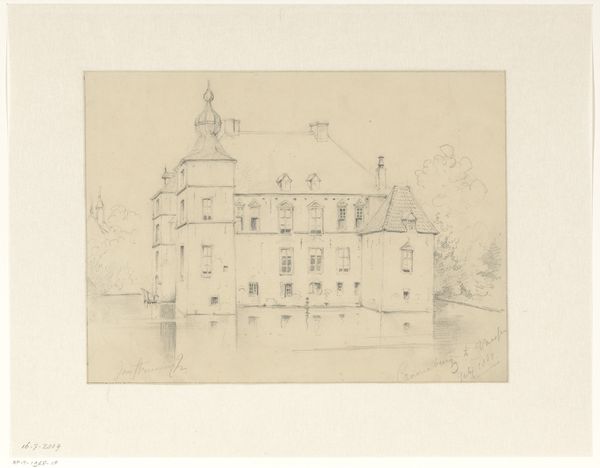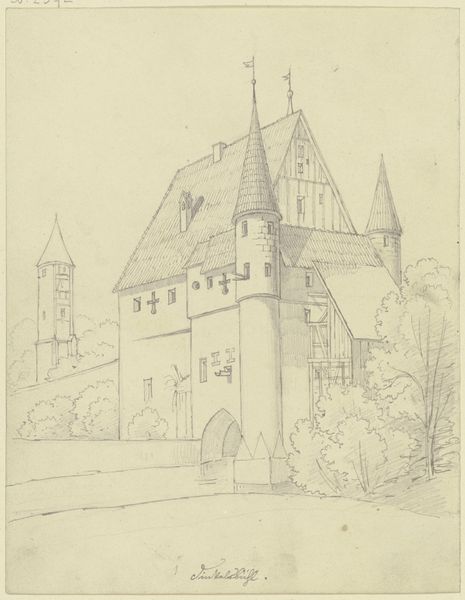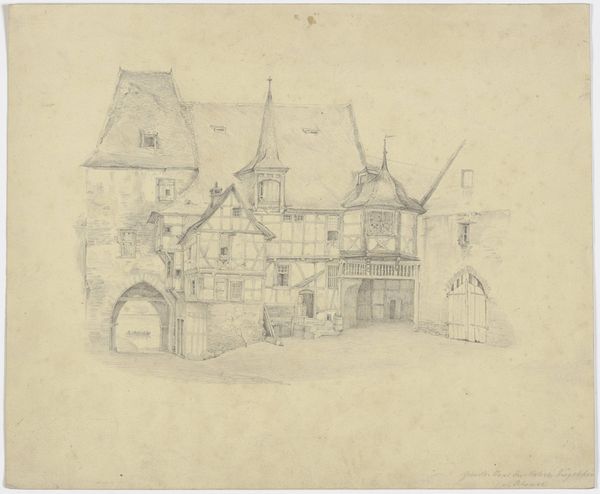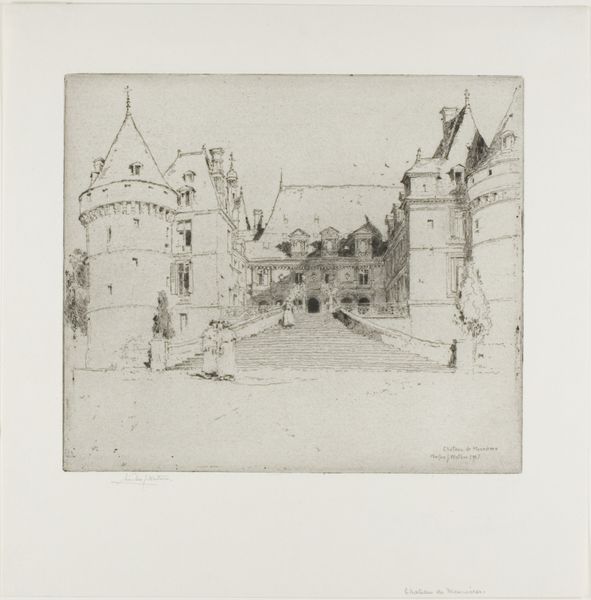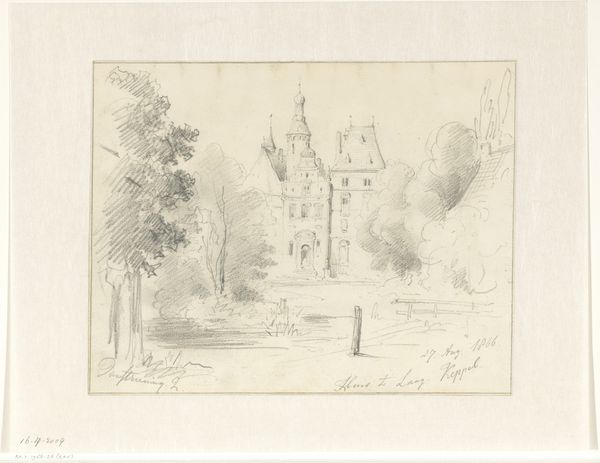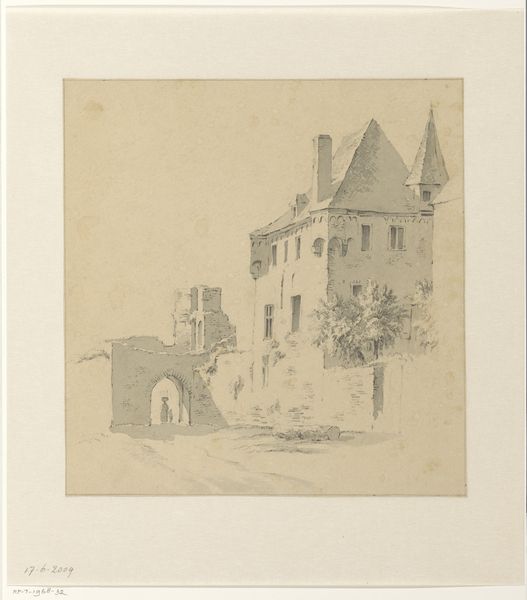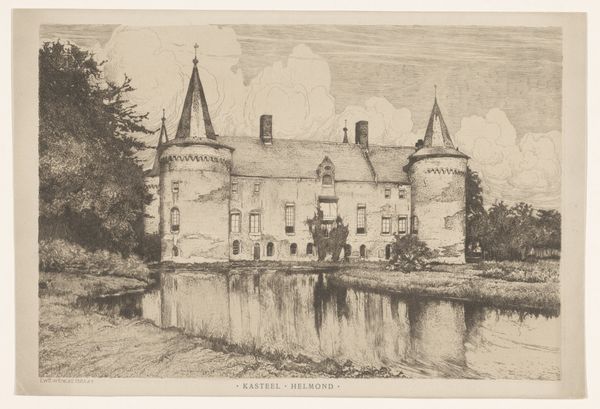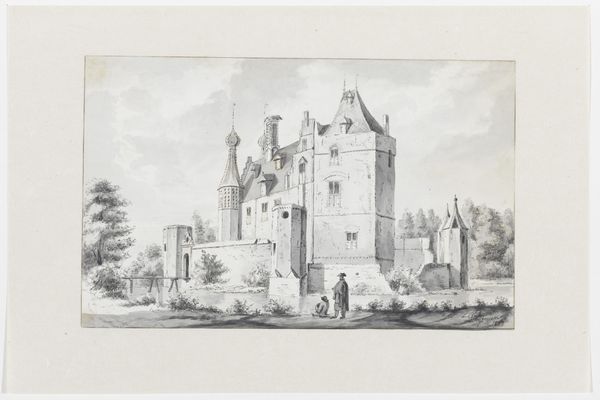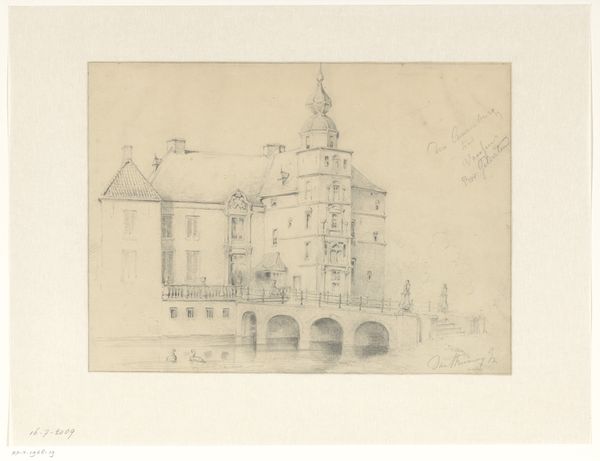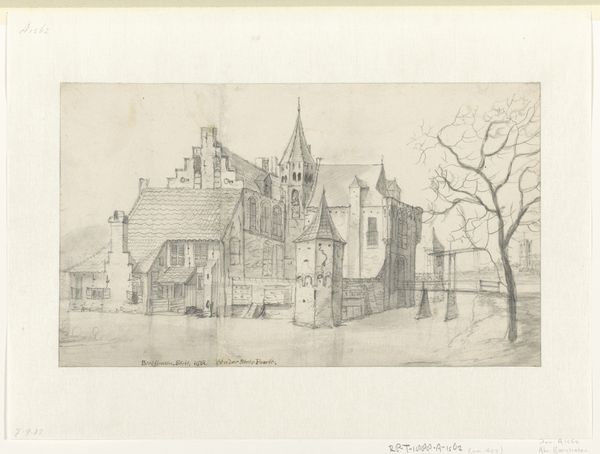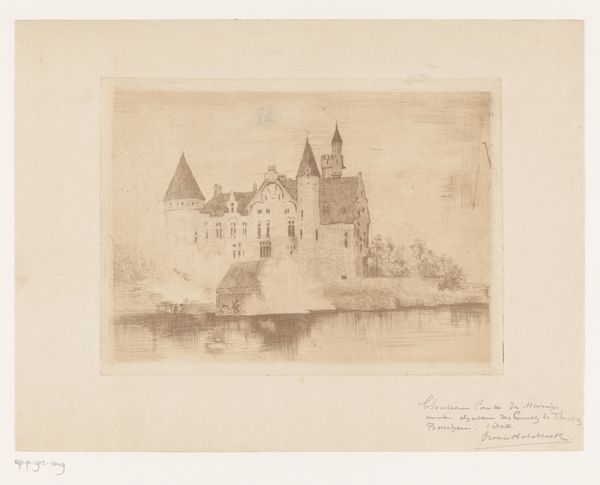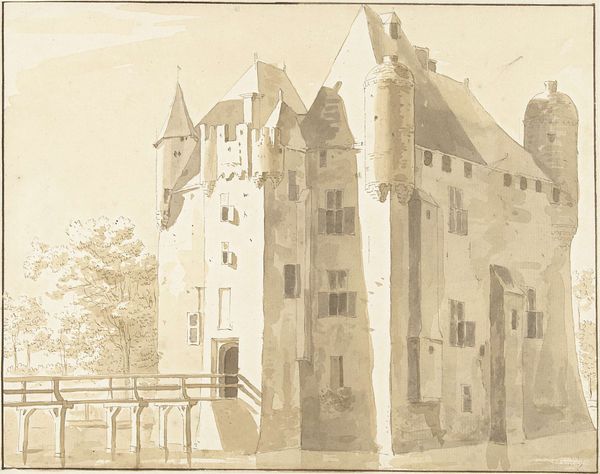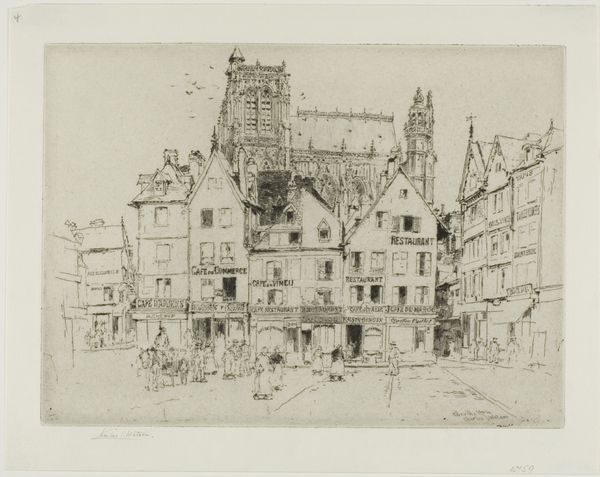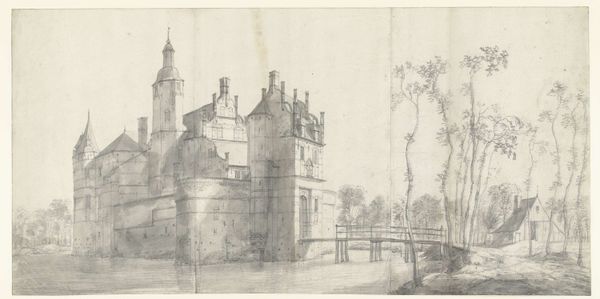
#
architectural sketch
#
aged paper
#
toned paper
#
light pencil work
#
photo restoration
#
pencil sketch
#
personal sketchbook
#
pencil work
#
watercolour illustration
#
watercolor
Dimensions: height 250 mm, width 266 mm
Copyright: Rijks Museum: Open Domain
Jan Striening rendered this view of Kasteel Cannenburg with pen in brown and gray ink and brush in gray ink. The castle looms, a monument to power and privilege, reflected in the still waters that surround it. Strienig, born in the Netherlands in 1827, came of age in a period of increasing democratization and industrialization. In this context, depictions of castles like Cannenburg, with their historical associations of feudalism and aristocracy, can be interpreted as statements about the endurance of traditional power structures in a changing world. The very act of depicting such a structure is not without its cultural meaning. Was Striening celebrating the past, or perhaps critiquing the continued relevance of such symbols of power in an era of social change? These are the types of questions a social historian of art asks. By examining the work and the artist within their specific historical and institutional context, and by consulting archives and other historical resources, we can start to understand the complex relationship between art and society.
Comments
No comments
Be the first to comment and join the conversation on the ultimate creative platform.
